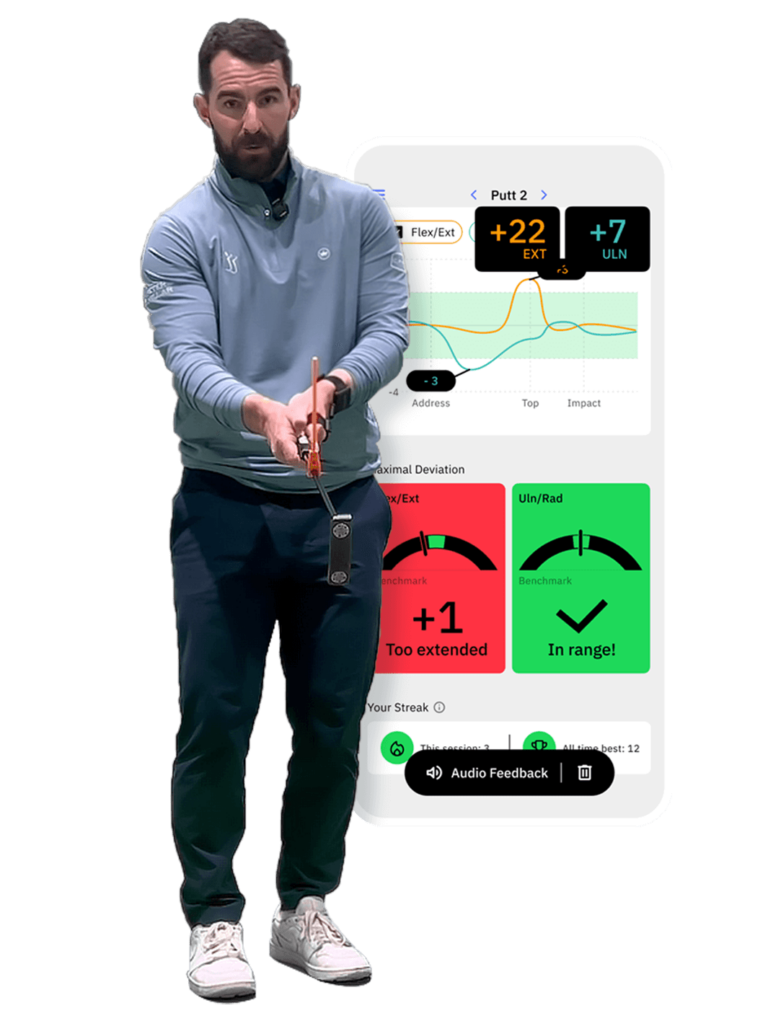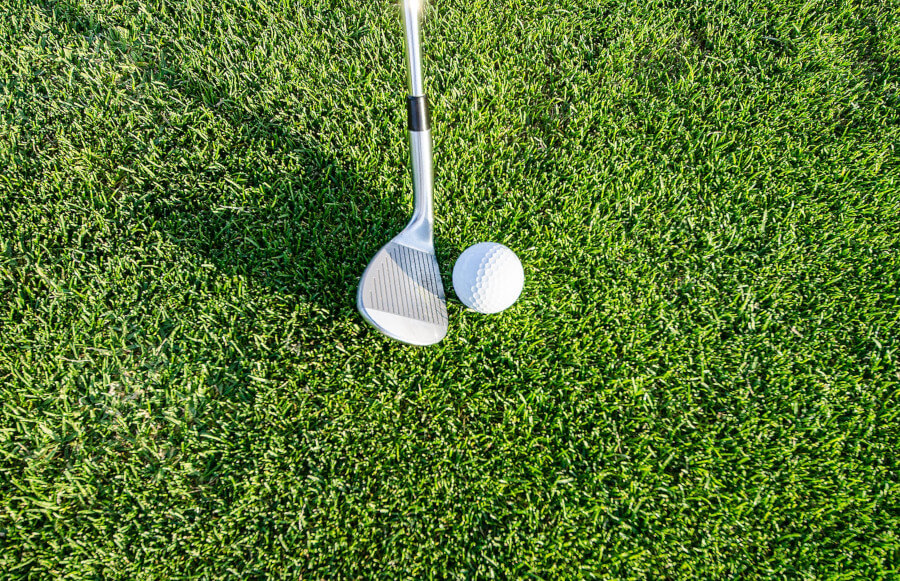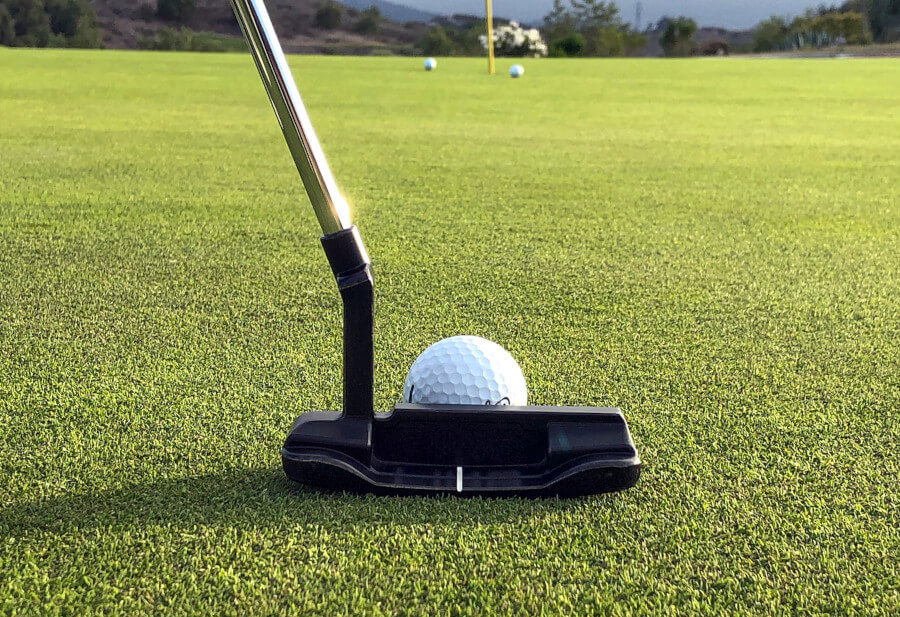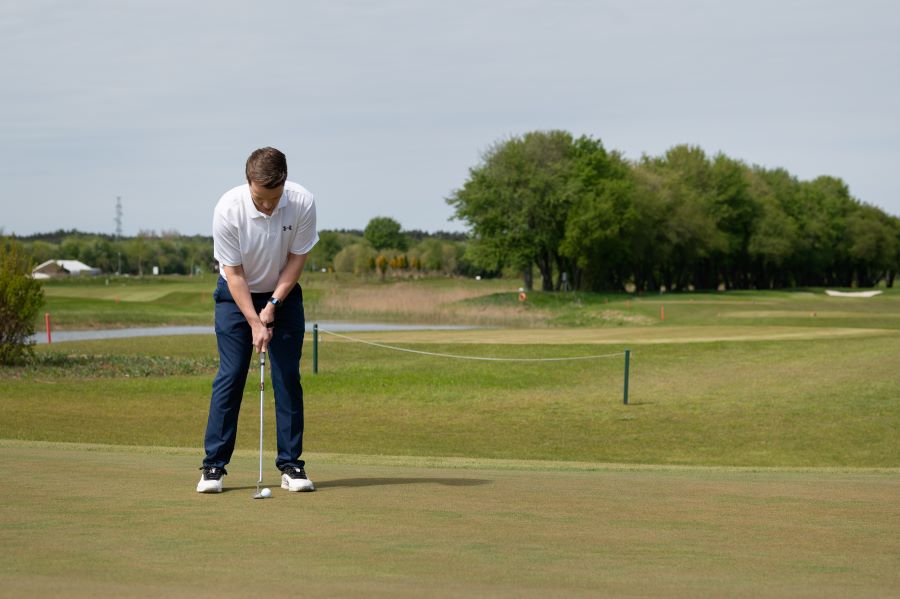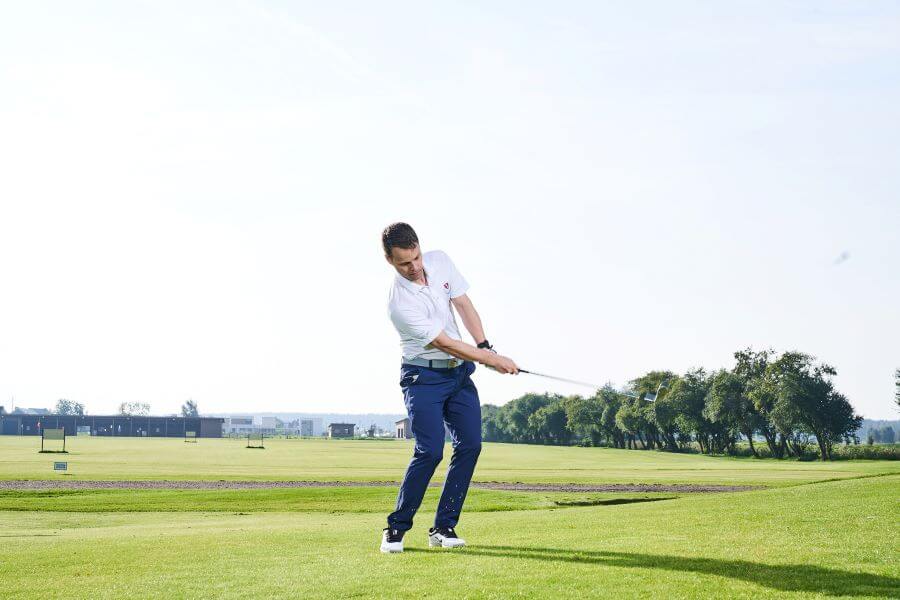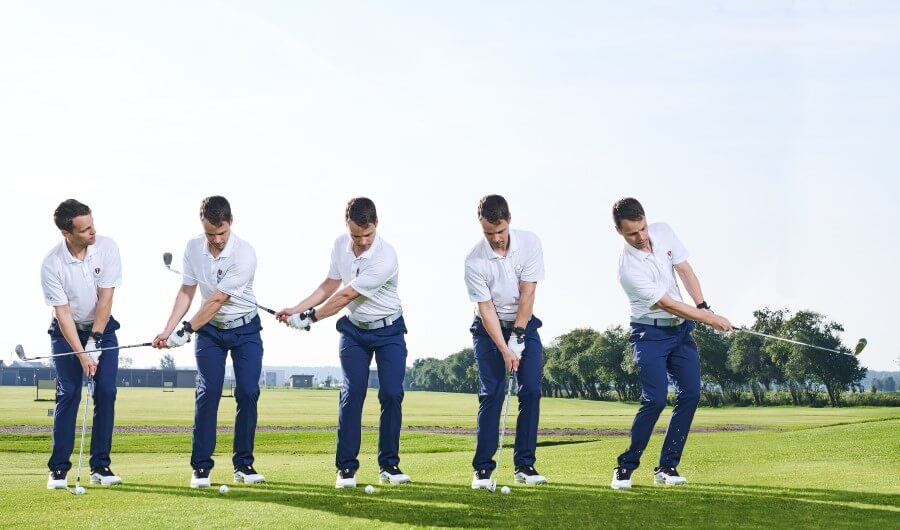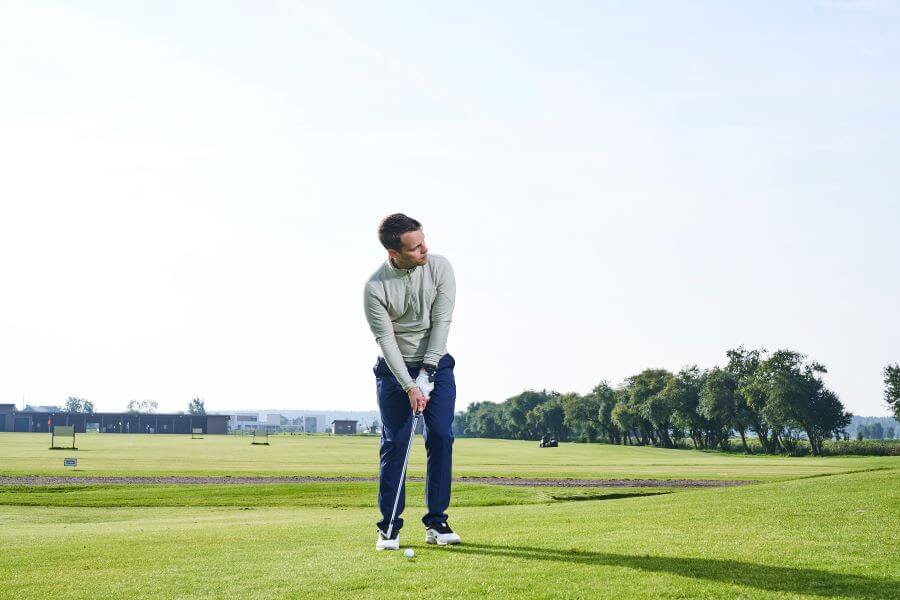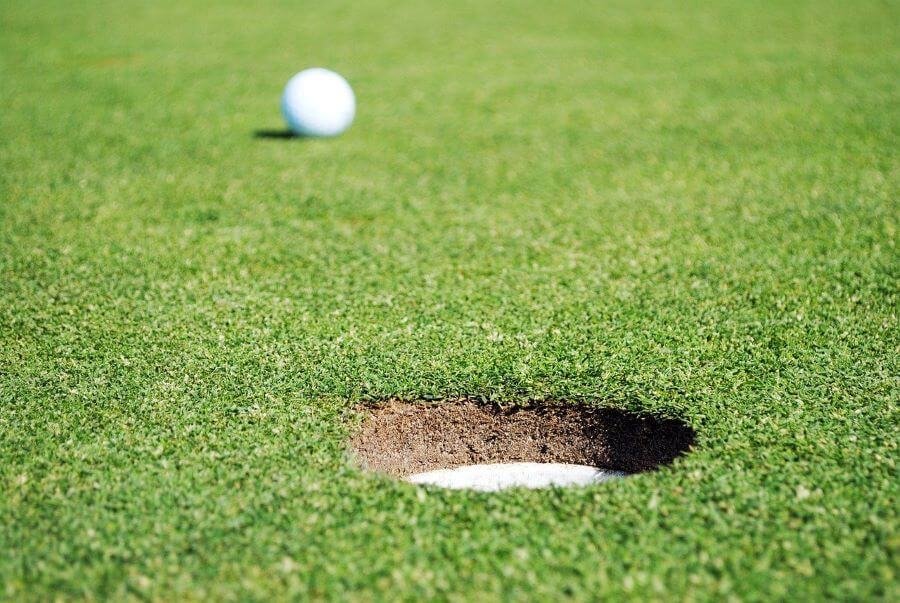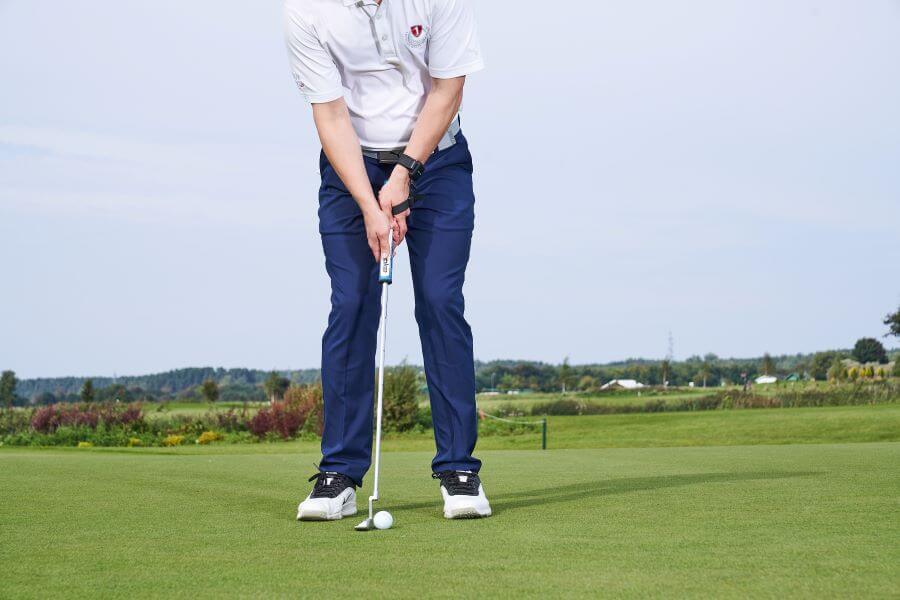Secrets Behind the Perfect Putting Stroke – Techniques & Tips Revealed
There is a lot of general advice out there on how to become a better putter. For more advanced players and those looking for quicker improvement, it makes sense to focus on the actual putting stroke.
Having analyzed more than 1,000,000 golf swings and putting strokes, we have collected some valuable insight into what works and what doesn’t on the greens.
I’ll give you our best putting stroke tips so that you can head out to the putting green with something to work on right now.
How to Improve Putting Stroke (Key Takeaways)
If you don’t have time to read the entire guide right now, here are some of the key tips you can run with.
- Consistency in the putting stroke is more important than the overall quality of the stroke.
- Wrist motion controls the clubface; with inconsistent wrist motion, expect inconsistent putts.
- The wrists do, in fact, move in the putting stroke; even the best players in the world have some wrist movement. It simply happens because of the natural swinging of the putter head.
- Even if you don’t think you are swinging on an arc, your putter will have a slight arc to it, making wrist motion in putting even more essential.
- Speed of stroke, overall length of stroke, and tempo are all key aspects that every player must focus on and perfect.
- The consistency of your grip and hand position will play into how consistent your putting stroke is.
Contents
- Tips & Techniques for the Perfect Putting Stroke
- 1. Limit the Range of Wrist Movement in Your Stroke
- 2. Putting Stroke Tempo Should be 2:1 (Test it!)
- 3. Consistently Controlling the Putter Face During the Putting Stroke
- 4. Grip Consistency Leads to Stroke Consistency
- 5. The Path Options All Players Have
- 6. Controlled and Lower Takeaway
- 7. Smooth Transition from Setup to the Start of Backswing
- The Best Ways to Improve Your Putting Stroke
- FAQs
- Final Thoughts
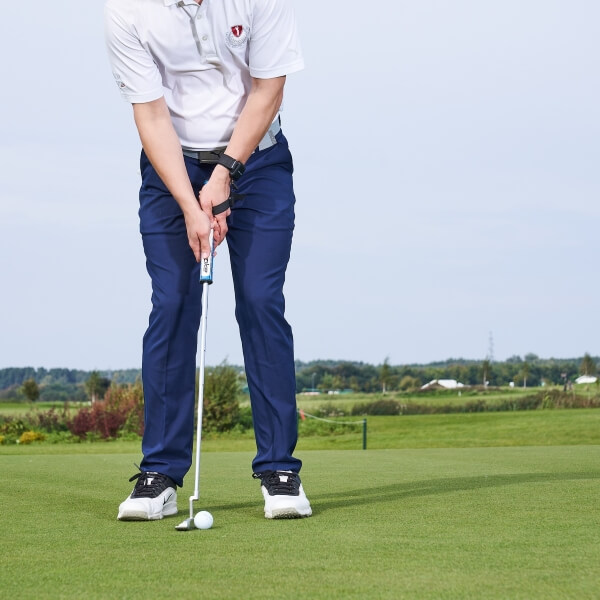
See how mastering wrist movements can transform your putting game.
Tips & Techniques for the Perfect Putting Stroke
1. Limit the Range of Wrist Movement in Your Stroke
The large database of recorded putting strokes by HackMotion clearly shows that Tour players are limiting the range of wrist motion during the putting stroke.
In addition, we see that these professionals are consistent and repeat this movement.
On the other hand, Amateurs typically move their lead wrist joint and have a lot of variation between any two putting strokes. This leads to inconsistency in the strike of the ball.
With the HackMotion wrist sensor, we can measure all aspects of the wrist motion in a putting stroke. The sensor measures – flexion/extension (bowing/cupping), radial/ulnar deviation (hinging/unhinging), global rotation, and tempo.
These minor changes in wrist angles can be hard to learn (especially without the use of HackMotion), but once you get a feel for it, you should have no trouble repeating the stroke.
This video will give you a simple drill you can do with a coin to keep the wrist in the same position throughout your stroke. Simply bringing some awareness to this concept will make you a better putter.
2. Putting Stroke Tempo Should be 2:1 (Test it!)
Tempo is critical. All great putters putt at a rate in a 2:1 ratio or very close to that.
That is, the recorded time of their downswing is twice as fast as the recorded time of their backswing.
Great putters often have different speeds for their backswing and through swing times, but that 2:1 ratio remains intact.
Longer putts merely require a longer length of your stroke. Your tempo or rate should always remain at a 2:1 ratio, even on those longer putts. Bad tempo is a killer in efforts to be consistent with your distance control on the greens. To test the rate of your putting stroke you can use a metronome.
“When using a metronome to gauge the speed of the stroke, studies have shown that most great putters swing the club back and through at a pace of 72 to 80 beats per minute.”
2017 Golf Digest article
Interestingly, when your tempo is correct and consistent, you can repeat your putting stroke mechanics and stay easier to manage and control.
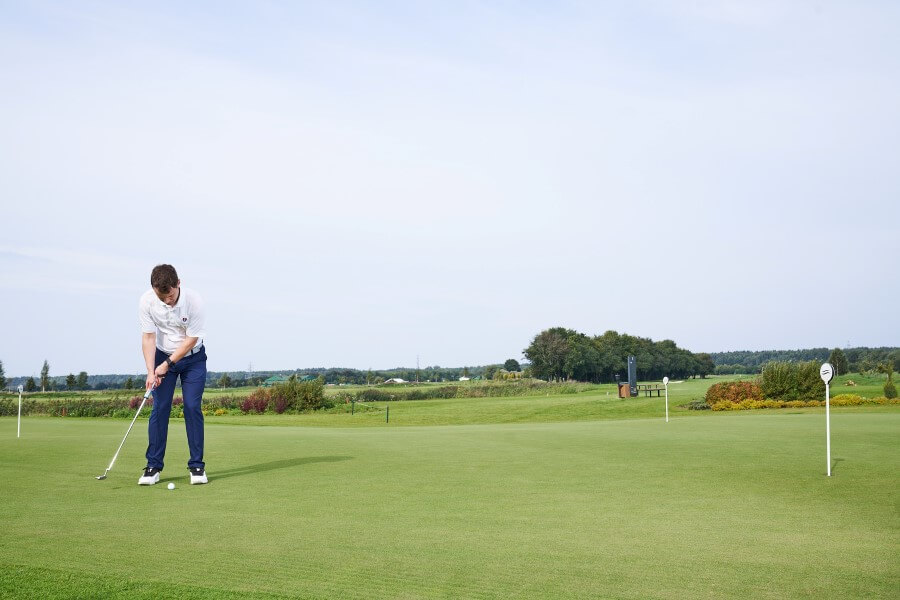
3. Consistently Controlling the Putter Face During the Putting Stroke
You are the only one in charge of your putter face, and your wrists are taking the lead.
Many players have been taught to keep the putter’s face on the target line with the “straight back, straight through” technique. After wearing the HackMotion for a few minutes, you will quickly realize that this is not actually possible.
The straight back straight through technique can cause a lot of issues in the putting stroke and can force players to make last-moment wrist movements – twisting the putter before impact to control the putter face.
To better understand the putting issues caused by the “straight back, straight through” technique, watch the video below, where golf coach Eric Cogorno and PGA Tour putting coach David Orr explains the faulty pattern and what causes it.
If you try too hard to hold on to that straight back and straight through, you will never win. Accept the fact that there will always be a slight arc, even if it feels to you as you are swinging the putter straighter.
Using HackMotion you can start making significant changes in your stroke and understanding what a perfect path feels like.
4. Grip Consistency Leads to Stroke Consistency
The grip you take does not matter all that much. You can play with the left hand low, the claw, the cross handed, and anything in between. However, if you put your hands on the club in a different position each time, you will pay for it when it comes to results.
Your putting grip must be consistent to create a consistent putting stroke.
HackMotion can help you get your hands on the club the same way every time. There is no perfect position to start; all players have slightly different starting points because of their natural hand, wrist, and arm position.
Use the HackMotion wrist sensor to try to ensure you are placing your hands on the club within a similar range or position each time.
5. The Path Options All Players Have
Next, we will look at the path of your putting stroke.
This is basically the back-and-forth motion of the putter’s head during the stroke. As putts get longer, there will be more of an arc. Longer putts require a longer stroke.
What is important is that the arc has the face of the putter coming into the ball squarely at impact. It is very common for golfers to struggle with a path that runs either out-to-in or in-to-out.
- Out-to-In path + a square face to the path = A Pulled putt
- In-to-Out path + a square face to the path = A Pushed putt
In addition to the path, you must also be concerned about face control. A path running square to the intended target line but as a face that is either open or closed will result in a missed putt.
- Square path + a Square face to the path = A straight putt
- Square path + a Closed face to the path = A putt missing left
- Square path + an Open face to the path = A putt missing right
Spend a few rounds recording your misses on the golf course. Where are your putts going, left or right?
Once you have this information down take a few videos of your putting stroke and see which issue could be yours.
Quick Tip: One of the best ways to practice the path of the clubhead, specifically, is by using a putting string training aid. The main purpose of the putting string is to help you get a better feel for your lines. In working on that, you will also be able to train your stroke to follow the proper clubhead path.
6. Controlled and Lower Takeaway
The takeaway of your putt is just as crucial as the takeaway in your full golf swing. One of the mistakes that amateur golfers make is to lift the putter almost directly off the ground as their first move.
The problem with this lifting is that it may change the way the ball then makes contact with the putter.
Where the ball strikes the face of the putter will impact both the direction and the distance of the putt.
You can do everything right from an alignment and reading standpoint and then lift the putter up and miss the sweet spot of your putt.
7. Smooth Transition from Setup to the Start of Backswing
The best putters in the world can take the putter from the setup position all the way through impact and make it look simple.
Golfers who struggle with putting often hesitate to pull the trigger and take the putter back down the line. The better you can get at the transition from setup to backswing and even from backswing to downswing, the more consistent your putting stroke will be.
Use a putting mirror to help with this. Watch the way the club is moving back from the ball. Is it a quick and jerky movement, or are you starting back slowly and getting the putter to move as stable as possible?

Learn how good wrist control can make your putting better.
The Best Ways to Improve Your Putting Stroke
Now that you have the key fundamentals of what it takes to improve your putting stroke. Here are some of the best drills out there to get it done.
Path Length Drill
If you are confused by how far back and through the putter should be going, this video will give you some direction and insight.
Your fundamentals need to be good to have complete consistency in the stroke. Setting something like this up on the green using a few tees pushed into the ground is all you need to wrap your head around the concept.
Grip Consistency
Check to make sure the grip you are using is not only one that you are comfortable with but one that you are repeating. Wear your HackMotion for your next practice session and set up to hit 10 putts about 15 feet from the hole.
Make sure the HackMotion is calibrated, and go ahead and work through your 10 putts.
When finished, take a look at the recorded data and the starting position of your wrist each time. We expect to see very slight variations just because of the degree of measurement that we are talking about.
However, if you see large discrepancies in the position of your hands on the club, you may be setting up for an inconsistent stroke before you even take the putter head back away from the ball.
Don’t forget to work on grip pressure consistency as well as grip position.
FAQs
Here are a few of the most commonly asked questions about the putting stroke and how to perfect it.
How do I make sure I have a perfect stroke while putting?
It’s very difficult to know if you are making the perfect stroke while you are in the middle of the stroke. Wearing a putting sensor like HackMotion can help you get real-time feedback on your stroke while you are in the middle of it.
Should you break your wrists when putting?
Your wrists will move slightly during your putting stroke. The most important thing about wrist movement in the putting stroke is consistency. If you break your wrists the same way each time, you will make more putts. However, it is easiest to keep wrist motion to a minimum.
What is the secret to consistent putting?
The secret to consistent putting is creating a consistent stroke. If you have a putting stroke you can repeat, you will be a great putter. There are so many variables in putting; don’t let one of them be your putting stroke itself.
How do you putt without breaking your wrist?
There will be some wrist movement and bending in the wrists, even the professionals do this. However, if you can limit the amount and keep it consistent in every stroke, you will make more putts.
Stop feeling like you need to stay locked in place; you can allow for a little rotation and movement as long as it’s repeatable.
Final Thoughts
Perfecting the putting stroke is a little more complicated than “getting better at putting.” This is where we broke down what your hands should be doing, how your wrist should control the putter face, and why all of this makes an impact in your game.
As you can see, having a HackMotion makes learning about your putting techniques all that much easier. Take that knowledge out on the course to become a better player.
